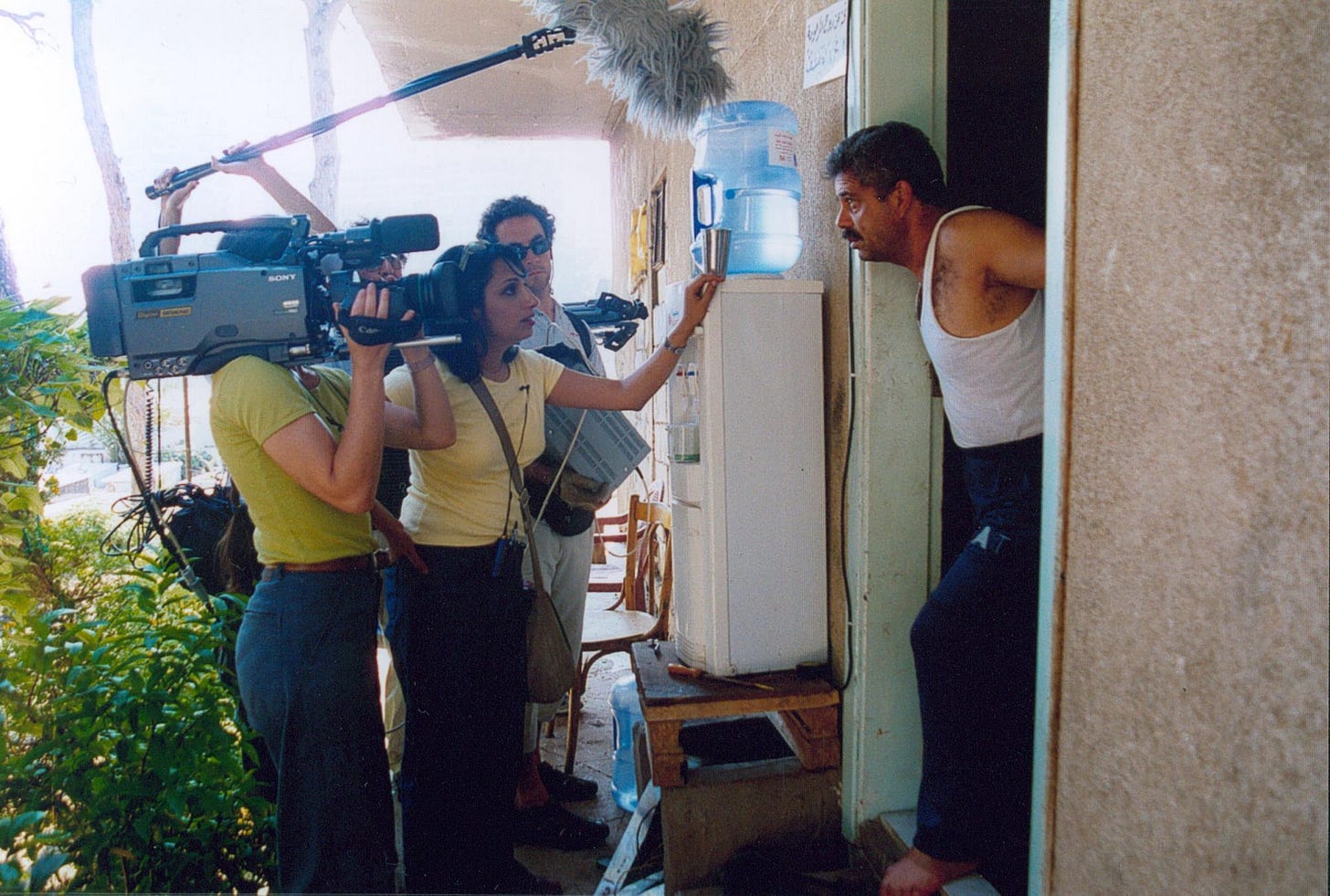Kings and Extras: Digging for a Palestinian Image
Arta Barzanji on what it means to sing at a funeral.
Welcome back to VOLUME 21: The Creative Nonfiction Film Weekend 2025.
Today, Arta Barzanji introduces the underseen documentary Kings and Extras: Digging for a Palestinian Image, directed by Azza El-Hassan. Arta is a London-based Iranian filmmaker, critic, and programmer. He is an alumnus of the critic programmes at the Locarno and Ghent film festivals and has written for outlets including MUBI Notebook, Sabzian, and Cineaste Magazine. His current film project is the documentary Unfinished: Kamran Shirdel.
Azza El-Hassan’s Kings and Extras: Digging for a Palestinian Image (2004) is a documentary shaped by absence. At its core lies a haunting mystery: What became of the Palestinian film archive that vanished following the Israeli invasion of Beirut in 1982? This was no ordinary collection—it represented decades of revolutionary cinema, visual records of a people’s resistance, daily life, and political vision. It is less a traditional documentary and more a cinematic excavation of memory, myth, and meaning.
The film opens with a playful tone. In a neighbourhood recently visited by an Iranian film crew, El-Hassan asks locals, including a child and an elderly woman, to mimic what they witnessed. ‘Show me how they [the actors] did it,’ she says, from behind the camera. These light-hearted moments plant the seeds of the film’s central questions: How do we recall images that are lost? And how do the Palestinian people and Palestinian cinema reflect and shape one another?
What follows is a multi-layered journey through geography and memory. El-Hassan’s search for the lost archives—once housed by the Palestine Liberation Organisation’s Film Unit—takes her across cities and conversations. She speaks with people in the streets and offices, as well as with artists, activists, and officials. ‘There’s a missing archive. Where do you think it could be?’ she asks repeatedly. To some, her mission seems quixotic. ‘You will never find them. My colleagues and I looked for them for years and couldn’t find them. You’ve started looking decades after the fact. What makes you think you could do it?’ To others, it seems distasteful: ‘Now is not the time for cinema. If you want drama, go to the border and see how people are being treated.’
This tension between culture and crisis forms a powerful undercurrent. Some view the search for old films as indulgent in a time of suffering. Others see it differently. One former member of the Film Unit recalls that preserving art in wartime was ‘like singing at a funeral’—a seemingly futile act, but also a defiant one. For the Unit’s filmmakers, cinema was not a finished product but a living, breathing force. Their films were not meant to be fixed, but to evolve through screenings and discussion, where art and life intersected.
Over the decades, researchers, archivists, and diaspora communities have reassembled an estimated 80 per cent of the archive. Much of this work has been done since Kings and Extras’ release in 2004, with El-Hassan and Khadijeh Habashneh (interviewed in the film) playing a significant part in this collective effort. This recovery was made possible because filmmakers often created multiple copies of each reel and sent them abroad. However, the central body of work—the films that had been stored together in Beirut—remains missing. Rumours persist, yet no clear answers emerge.
As El-Hassan follows each thread, a character she meets remarks that her obsessive search resembles that of Sherlock Holmes, suggesting she’s looking for hidden meaning in an illogical way. This comment adds a layer of meta-commentary to the film itself: Is the search a rational act of recovery, or a poetic one? Is she chasing shadows, or resurrecting memory?
This question comes to a head in one of the film’s most striking scenes, when El-Hassan and a collaborator arrive at a graveyard. It is rumoured that some of the archive might have been buried there. The implication is unsettling. The search for lost cinema has led them to a literal landscape of death. But when faced with the prospect of disturbing the graves of martyrs to continue their hunt, they stop. The search ends—not with discovery, but with ethical refusal. The archive remains lost, but something else is found: the limits of what can or should be unearthed.
Kings and Extras does not offer neat resolutions. The mystery of the missing films remains unsolved. Yet, in a more profound sense, El-Hassan’s journey is a success. Through her interviews, detours, and unanswered questions, she demonstrates how memory continues to circulate even in the absence of physical proof. The films may be buried or destroyed, but their spirit lives on—in fragments, in recollections, in the very act of searching.
Cinema, El-Hassan suggests, is not just about what we see, but about what we long to see. It is as much about what’s missing as what’s visible. In this sense, Kings and Extras is a kind of ghost film, haunted by lost reels, but also animated by the belief that cultural memory, no matter how scattered or silenced, is worth pursuing.



